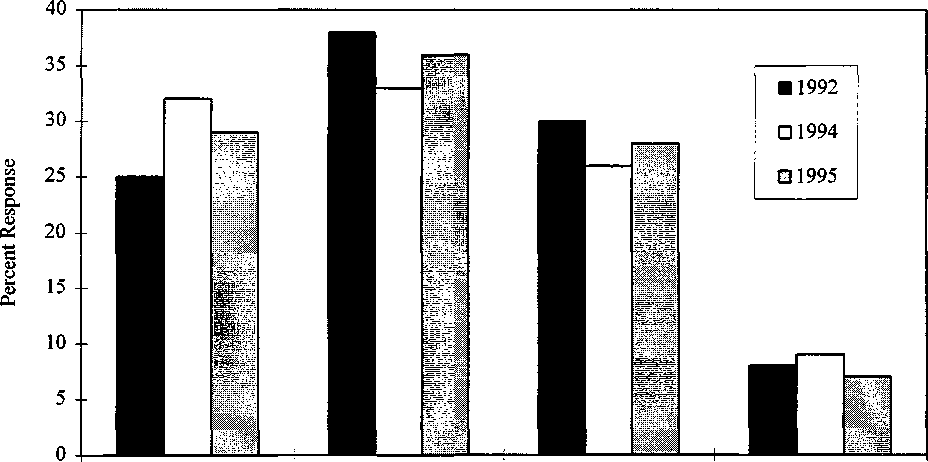Hoban, ThomasJ.
Trends in Consumer Acceptance and Awareness of Biotechnology 7
Most consumers who participated had little
knowledge about biotechnology (or even tradi-
tional food production techniques for that matter).
Some said they had heard of a “new type of to-
mato” which had been in the news prior to the
focus groups. Most were very interested in the
subject and wanted to receive more information.
They generally asked for the same types of in-
formation as they would for any food. They
mainly wanted to know how foods produced
through biotechnology would taste and what they
would cost. Information on safety and nutrition of
specific products was also seen as important. Fo-
cus group participants were also most likely to
trust independent health organizations and uni-
versity scientists.
Influences on Public Acceptance of
Biotechnology
Additional analysis of the 1992 and 1994
surveys provides insights into the types of con-
sumers who will be most likely to accept products
of biotechnology. As with other food issues,
women generally had more questions and con-
cerns about biotechnology than men. However,
the majority of women still were positive on bio-
technology. Respondents with higher income
were more likely to find the products acceptable.
Those with more education were more likely to
accept biotechnology than respondents with less
education. Greater general interest in science and
technology was related to greater acceptance of
biotechnology.
Awareness and knowledge of biotechnology
generally has a major influence on acceptance of
products. Survey respondents who had read or
heard more about biotechnology were much more
likely to find the products acceptable than those
with less awareness. Similar patterns are evident
with increased interest in biotechnology. Confi-
dence in government and trust in information
sources prove to be very important. As confi-
dence and trust increased, consumers’ acceptance
Ofbiotechnology rose dramatically.
Figure 5. Amount Heard or Read about Biotechnology.

Nothing
A Little
Some
A Lot
Source: USDA 1992, GMA 1994, and FMI 1995.
More intriguing information
1. Determinants of U.S. Textile and Apparel Import Trade2. The name is absent
3. THE USE OF EXTRANEOUS INFORMATION IN THE DEVELOPMENT OF A POLICY SIMULATION MODEL
4. The name is absent
5. Integrating the Structural Auction Approach and Traditional Measures of Market Power
6. The Role of Evidence in Establishing Trust in Repositories
7. CAPACITAÇÃO GERENCIAL DE AGRICULTORES FAMILIARES: UMA PROPOSTA METODOLÓGICA DE EXTENSÃO RURAL
8. The name is absent
9. Computational Experiments with the Fuzzy Love and Romance
10. FDI Implications of Recent European Court of Justice Decision on Corporation Tax Matters